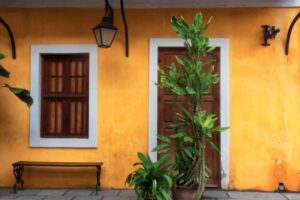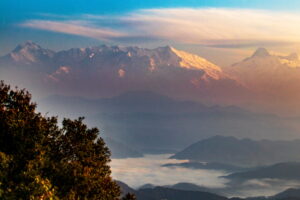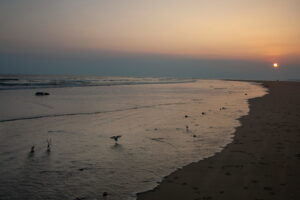Corbett National Park is one of the most beautiful forests in India. It is rich with flora and fauna, and the possibility of wildlife sightings, especially the big cats, is relatively high here. That is why, every year, many tourists and wildlife enthusiasts from India and abroad visit this park. The topography of low Himalayan ridges and the sub-Himalayan Terai region, with large rivers cutting through, makes the landscapes a treat for the eyes. As per the last census, the highest population of tigers among all national parks in India is in Corbett National Park, making this park the country’s most visited national park.
Pin the below image to save the post and read it later!!
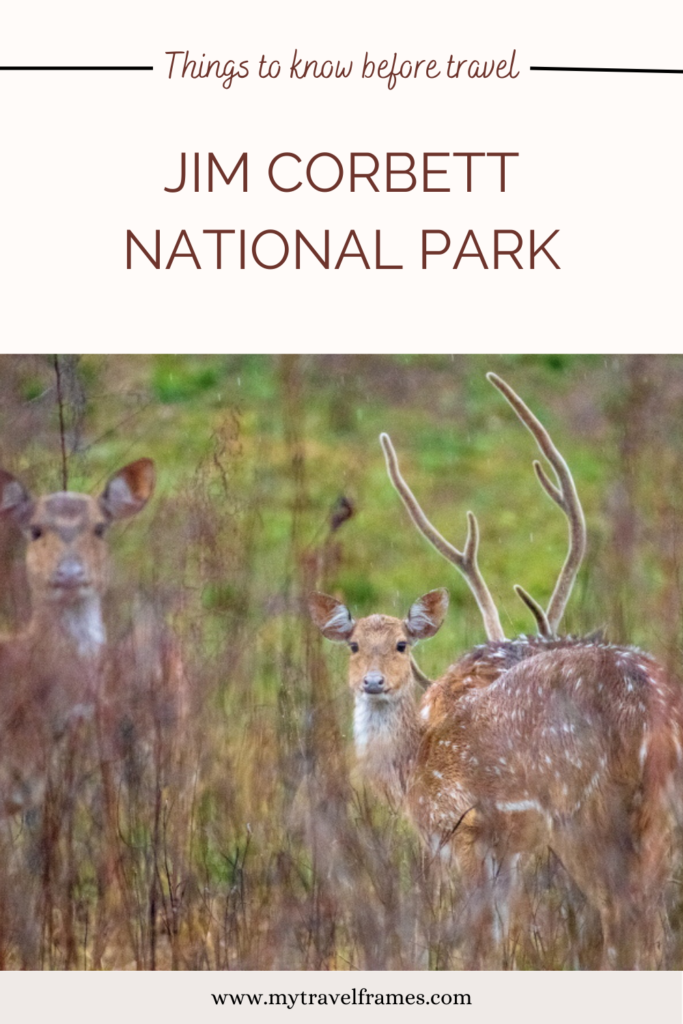
About Corbett National Park
Jim Corbett National Park is situated in Uttarakhand state in India. It is the first national park in India. It was declared a national park back in 1936 and was named Hailey National Park after William Malcolm Hailey, then governor of the United Provinces. In 1954 it was renamed Ramganga National Park. Finally, in 1956, it was named Jim Corbett National Park to honour Jim Corbett, the famous naturalist and author who died a year before.
The total area of this national park is 1318 sq. km, of which 520 sq. km is the core part. The remaining buffer zone has reserve forests and the adjacent Sonanadi Wildlife Sanctuary. In 1974 Jim Corbett National Park was chosen to launch Project Tiger Conservation Project.

The park stretches between the lesser Himalayas in the north and the Shivaliks in the south. The altitude ranges between 360 metres to 1060 metres. Numerous ravines, ridges, minor streams, plateaus and grasslands are inside the forest. The mainstream is the Ramganga River which courses through the woods and forms the Patli Dun Valley.
A total of 488 species of plants have been recorded inside the forest. The deciduous forest comprises sal, peepal, rohini (kumkum tree) and mango trees. Three-fourths of the entire area is dense forest, whereas 10% is grasslands inside Jim Corbett National Park.
Bengal Tigers, leopards, barking deers, sambar deers, hog deer, wild foxes, Himalayan black bears, Himalayan goral, Indian pangolins, langurs, and rhesus monkeys live in this forest. In summer, hundreds of elephants can be seen in herds. Nearly 600 resident and migratory birds, including crested serpent eagle, blossom-headed parakeet and red junglefowl, can be seen here.

Tourism Zones
There are seven zones in Jim Corbett National Park that tourists can visit. These are-
- Dhikala Zone
- Bijrani Zone
- Jhirna Zone
- Dhela Zone
- Garjia Zone
- Durgadevi Zone
- Sonanadi Zone
- Pakhro Zone
Among all these zones, the first six zones are near Ramnagar, while the last two zones are close to Kotdwar. Most tourists enjoy safaris in Dhikala, Bijrani, Garjia and Jhirna zones.
Dhikala Ecotourism Zone
Entry gate: Dhangadi
Distance from Ramnagar: 15 km
Dhikala is the largest zone among all seven. The popularity of the Dhikala zone is for its grasslands beside the Ramganga reservoir. The chances of spotting a Bengal tiger here are very high. You will often find herds of Asiatic elephants going towards the Ramganga reservoir. The distance from Dhangadi gate to Dhikala FRH is 35 km, and it takes almost one and a half hours to reach there. The Dhikala Tourist Complex overlooks the Ramganga River and is perfect for observing crocodiles and gharials basking in the banks of Ramganga.

Bijrani Zone
Entry gate: Aamdanda
Distance from Ramnagar: 1 km
Bijrani Zone is also very popular among wildlife enthusiasts. This zone is enriched with a vast number of flora and fauna species. BIjrani Zone has many grasslands, none of which is as Dhikala, but the topography favours tiger sightings.
Jhirna Zone
Entry gate: Dhela
Distance from Ramnagar; 15 km
Jhirna zone is located on the southern periphery of the park. Himalayan sloth bears and Asiatic elephants are the main attraction of this zone. The topography consists of deciduous forests interspersed with grasslands that give good visibility for animal sightings.
Dhela Zone
Dhela is the only zone in a buffer area where tourists can go on safari throughout the year. This zone was opened in 2014 for tourists. This zone has diverse wildlife, and spotting an animal here is very high considering it a buffer zone.

Garjia Zone
Entry gate: Aamdanda
Distance from Ramnagar: 1 km
Garjia zone has a high number of tigers inside. The zone is accessed by travelling 5 km through the buffer zone. The topography is similar to the Bijrani zone, and the chances of spotting wild animals are high here. Garjia Devi Temple near the Garjia village is a sacred place in Uttarakhand.
Durgadevi Zone
Entry gate: Durgadevi
Distance from Ramnagar: 30 km
Durgadevi zone is situated on the northeast end of the forest. This zone is mainly located on hilly terrains. The Ramganga River and many other small streams transect it. This zone is famous for sighting elephants and other wild animals from Domunda Bridge. Famous Mahseer Fish can be seen in the river waters in Durgadevi Zone.
Sonanadi Zone
Entry gate: Kalagarh/Vatanvasa
Distance from Kotdwar: 20 km
Sonanadi Wildlife Sanctuary became a part of Corbett National Park in 1991 as a part of Project Tiger. Situated on the north of the Sonanadi River, this zone is home to Asiatic elephants, Bengal tigers, leopards, chital, sambar and reptiles. This is also a habitat of 600 residents and migratory birds.
Pakhro Zone
Entry gate: Pakhro
Distance from Kotdwar: 20 km
Pakhro Zone is near the Sonanadi Wildlife Sanctuary and can also be accessed from the Durgadevi gate. The fauna is rich with big animals like tigers, elephants and leopards. This is the only zone where tourists can go for a guided walk tour near the forest rest house.

How to book a safari
You can book a safari or a night stay in one of the forest rest houses in Corbett National Park via the government portal online. You need to register on the official website with your mobile number.
The booking should be made by desktop or laptop with a static IP. Once your registration is done, keep your mobile phone with you and keep the softcopy of passport-size photographs and the visitors’ ID card (Voter card / Aadhar card / Passport) ready (Passport is mandatory for non-Indian visitors). Register with two different phone numbers for two different accounts if you want to book more than one safari after another.
The booking window of 1 monthly period opens 45 days (from 10 am) before day visits or safaris for day visitors. The booking window for a night stay in rest houses is open 40 days (from 12 pm) before a 1-month booking window period. Check the exact dates from the website and prepare yourself accordingly.

If you book a night stay, you do not need to pay for entry charges for safaris in the same zone separately. Your night stay tariff adjusts the entry cost in the same zone. You need to book your Gypsy after you get the booking in a forest rest house.
For Gypsy, once you pay the entry charge for your safari or get a booking in FRH, you need to book the Gypsy thereafter. There is a list of Gipsy owners on the website from which you can select one.
Once you booked your Gypsy, talk to the person whose number is provided on the website. You can book your Gypsy anytime before the day of your safari, but it is always better to book sooner in peak season.
For booking a seat in Canter in Dhikala Zone, you need not do anything else once your online booking is made. No need for any separate Gypsy booking.
If you do not want to go through all of these, you can book the safaris through a travel agent at an extra charge or can request your hotel beside Corbett National Park, who will arrange it for you at an extra charge. You need to send a soft copy of all documents and photographs beforehand.

Safari Timings
Different zones in Corbett National Park remain open at different times. Some open from October to mid-June, while a few remain open throughout the year. Dhikala Zone remains open from 15th November 0 15th June. Bijrani, Durgadevi, Garjia. Pakhro and Sonanadi remain open from 15th October – 15th June. Dhela and Jhirna zones are open throughout the year.
For day visitors, each safari lasts for 4 hours, There are two slots in a day – morning safari and evening safari. For those who are staying inside the forest in a forest rest house, the Gypsy, driver and guide stay with the guests at the rest house.

Gypsy safaris are available for all the zone in Corbett national park for day visitors, except Dhikala Zone. Day visitors can only opt for the Canter safari in Dhikala Zone. Those who are staying inside the Dhikala Zone can go for a Gypsy safari inside.
Cost of Safari
Where to stay
Staying in a forest rest house inside the forest is an excellent experience for wildlife lovers. There are many forest rest houses in Corbett National Park zones where visitors can spend a night. The facilities are basic, but the locations are the main attraction of these rest houses. Most of them do not have a canteen, and guests must bring their ration to stay here. Only a few, like Dhikala FRH and Bijrani FRH, have attached a canteen with the rest houses.
Apart from these FRHs, there are many hotels and guesthouses in Ramnagar and surrounding areas where tourists can stay if they do not book an FRH. KMVN has a tourist rest house in Ramnagar. Apart from that, many hotels, resorts and camps are available for booking on different budgets, from basic to luxury.
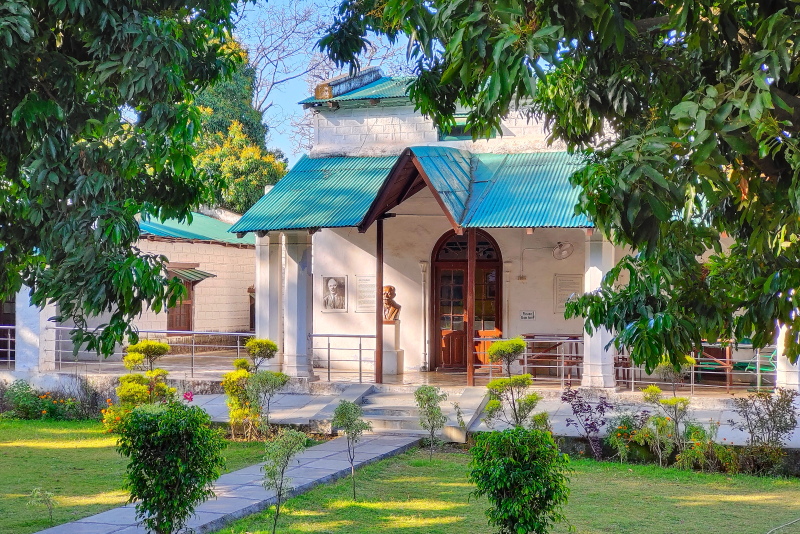
When to visit
You can visit Corbett National Park from October to June. All the zones are open during that time and get closed during monsoon. Dhikala Zone opens in mid-November. Jhirna Zone and Dhela Zone are open throughout the year.
The best time for animal sightings is during summer from mid-March to May end. This is the peak time for tourists in Corbett National Park. When the grasslands are sparse, animals can be spotted inside them. Water scarcity also compels the animals to visit the water reserves like rivers and dams, and chances of spotting wild animals near the water sources are high. The temperature is high in summer during mid-day, but the mornings and afternoons are pleasant.
From November to February, the temperature is cold in Corbett National Park. The mornings are foggy and windy. The picturesque forest landscapes and the pleasant weather attract many visitors during this time. This is also the best time for bird watching.

How to reach
Corbett National Park is well connected with major cities in north India. Ramnagar is the nearest town to Corbett National Park and the main access point for most zones. For Pakhro and Sonanadi zones, Kotdwar is the nearest town. The distance between Delhi and Ramnagar is 280 kilometres. Kotdwar is 240 kilometres from Delhi.
By air
Pantnagar (PGH) is the nearest airport to Ramnagar. The distance between Ramnagar and Pantnagar airport is 80 kilometres. Taxis are available from the airport for Ramnagar. The Indira Gandhi International Airport (DEL) in Delhi is 265 kilometres from Ramnagar. It takes around 5-6 hours to reach Ramnagar from Delhi. Kotdwar is a 4-5 hour drive from Delhi airport. Taxis from Delhi International Airport are always available for Ramnagar.
Book your flight to Pantnagar or Delhi!!
By rail
The nearest railway station of Corbett National Park is Ramnagar which is well connected with cities like Delhi, Kolkata and Varanasi. The best overnight train from Delhi is 15013 Corbett Park Link Express which departs from Old Delhi Station (DLI). 15035 Sampark Kranti Express is another train that departs from Old Delhi station (DLI) in the afternoon and reaches Ramnagar around 9 pm. Both the trains run all seven days a week.
By road
Delhi is very well connected with Ramnagar by road. The road until Moradabad is an excellent six-lane highway. Moradabad to Ramnagar is a double-lane road, and traffic is slower. There are buses available from ISBT to Ramnagar and Nainital. Uber outstation cabs are also available from Delhi at any time of the day.
Book a cab for your entire trip!!

Few more things to remember
- Do not forget to carry your identity card in original. Voter cards or Aadhar cards will do for Indians. Non-Indians need passports. Kids need a school ID/birth certificate if they do not have a passport/Aadhar card.
- Corbett National Park remains open from mid-October to mid-June. Dhikala Zone opens in mid-November. Jhirna and Dhela Zone remain open throughout the year.
- The safari start and end times apply from the entry gate of each zone. Consider the distance of the entry gate from your hotel and prepare yourself and your pick-up to the entry gates accordingly.
- You have to reach the entry gate on your own, or you can request your Gipsy to pick you up and drop you at your hotel with some extra money. The pick-up point of the Canter safari for Dhikala Zone is the Forest Office in Ramnagar, or you must reach the Dhangadi Gate yourself.
- You can not get out of your car once you enter the forest except the forest rest houses. The cars usually take a break at these forest rest houses for tea and snacks.
- No plastic packets or wrappers are allowed inside the park. However, they allow plastic water bottles to take. You can eat at the canteen in the forest rest houses where the Gypsies and Canters take a break.
- There will be an authorised guide with every car. He will help you to spot the animals inside the forest. Always listen to him carefully.
- Do not throw any bottles or garbage inside the forest. Bring back what you have carried inside.
- Spotting a wild animal, particularly a tiger, is all about luck and needs patience. The chances of tiger sightings in Corbett National Park are high. Even if you don’t, please behave responsibly. The forest is not a circus with animal shows (even that is banned now!!) going on. Do not shout or speak loudly even if you do not see a thing. It’s annoying!
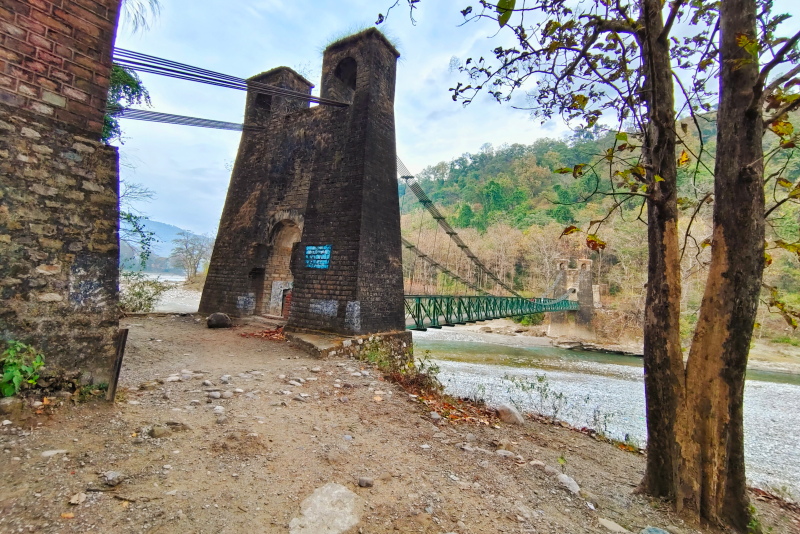
Book your trip: Resources
- Flight
Use Skyscanner or Google Flights to book your flight.
- Accommodation
Tripadvisor and Agoda are perfect for booking your hotel. If you want to stay in a hostel, then Hostelworld would greatly help you find one at your convenience.
- Travel Insurance
World Nomads is perfect for travel insurance. You can get comprehensive protection from them. Let them take care of unexpected situations while you concentrate on your trip.
- Package Tour and Activities
You can book a package tour from G-Adventures and Viator. They are a reputed company arranging small group tours and customising them per your requirements. You can also use Get Your Guide to book your private transport, city tours, heritage walks, food walks and other experiences like a cooking lesson or a Yoga session.
Disclosure: Some of the links below are affiliate links. You will be directed to another third-party website when you click those links. If you purchase anything via those links, I will earn a referral bonus without any extra cost to you.

